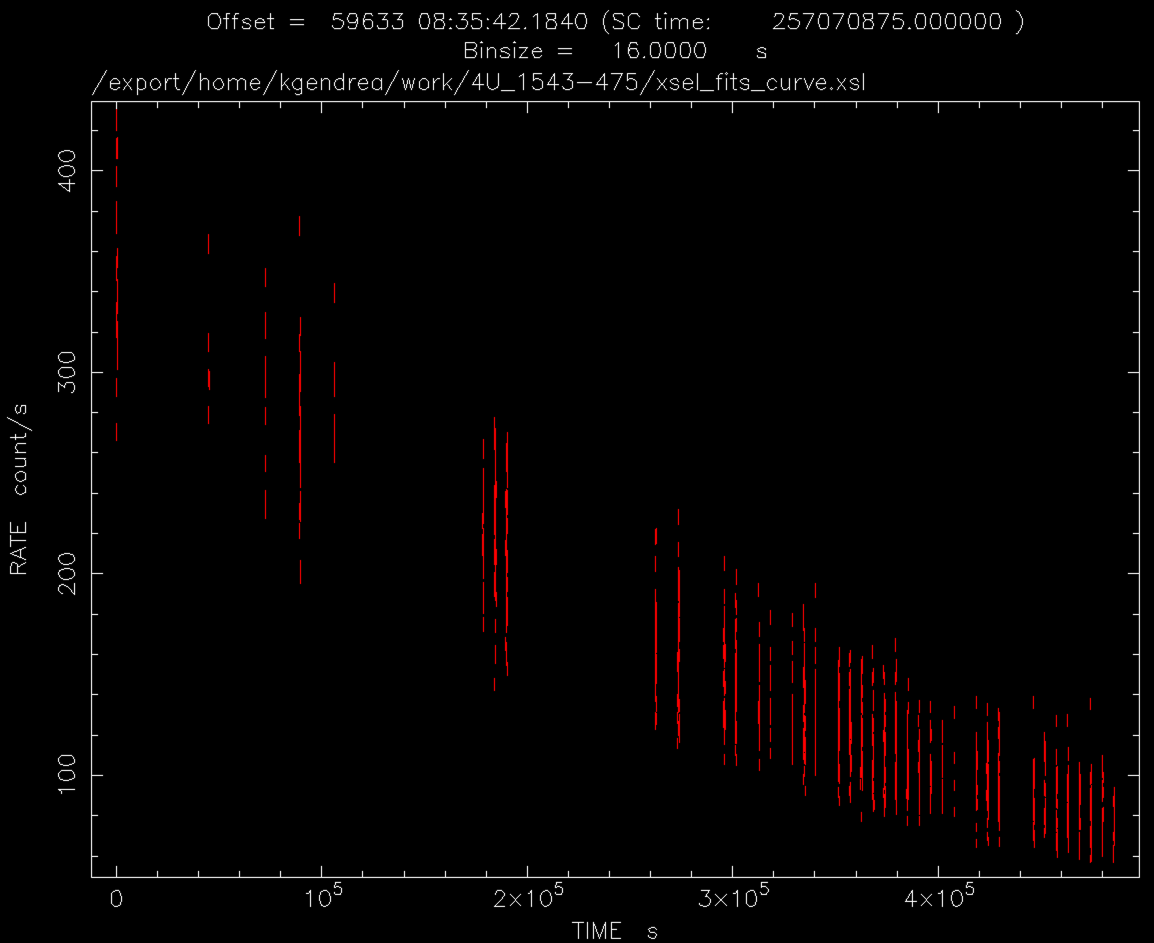NICER / ISS Science Nugget
for March 10, 2022
Attentive to Accretion Echoes
In June 2021, the black-hole binary known as 4U 1543-47 went into outburst for the first time in 17 years, as reported in our weekly science summary for
6/24/21. Such outbursts represent months-long sustained accretion episodes -- the transfer of matter at high rates from a low-mass companion star onto a roughly 10 Solar-mass black hole -- and the 4U 1543 event represented the brightest black-hole outburst seen in over a decade. NICER tracked the evolution of the X-ray emission as the source brightened and faded through the typical succession of accretion "states" and returned to quiescence. Generically, different accretion states are characterized by their differing timing and spectral properties: the initial "hard" state shows substantial brightness variations on short timescales (seconds or less), while the eventual "soft" state brightness is stable as it very gradually declines; spectrally, soft states are dominated by thermal emission from the disk of accreting material outside the black hole's event horizon, while hard states are dominated by high-energy emission thought to arise in a "corona" of super-heated gas above the plane of the disk.
Recently, 4U 1543 brightened again in an apparent "re-flare" or "echo outburst," a phenomenon that appears to be more common than previously thought and poorly sampled with past missions; with its scheduling flexibility, NICER has proven to be a valuable asset for monitoring re-flares in several systems (see, e.g., the NICER weekly science summary for 11 June, 2020). The precise starting date of the current 4U 1543 re-flare -- which may be the first of several -- is unknown because the system was behind the Sun and inaccessible to most telescopes through the winter months. NICER resumed observations when 4U 1543 reemerged from Sun-avoidance in late February, and discovered that the system was again in the hard state, albeit nearly 200x dimmer than at the peak of the initial outburst 8 months earlier. NICER continues to track the re-flare evolution, with the expectation that 4U 1543 will be only the second binary known to show accretion state changes during re-flare episodes. An Astronomer's Telegram describing the early observations of this re-flare was published last week by MIT graduate student Jingyi Wang and collaborators.

Figure: NICER X-ray photon countrate for the black-hole binary 4U 1543-47 as a function of time, spanning approximately 5.6 days from Feb 23, 2022. Each point represents an average over a 16-second time bin, and significant hard-state variability is evident especially in the early observations.
<< Previous
Main Index
Next >>